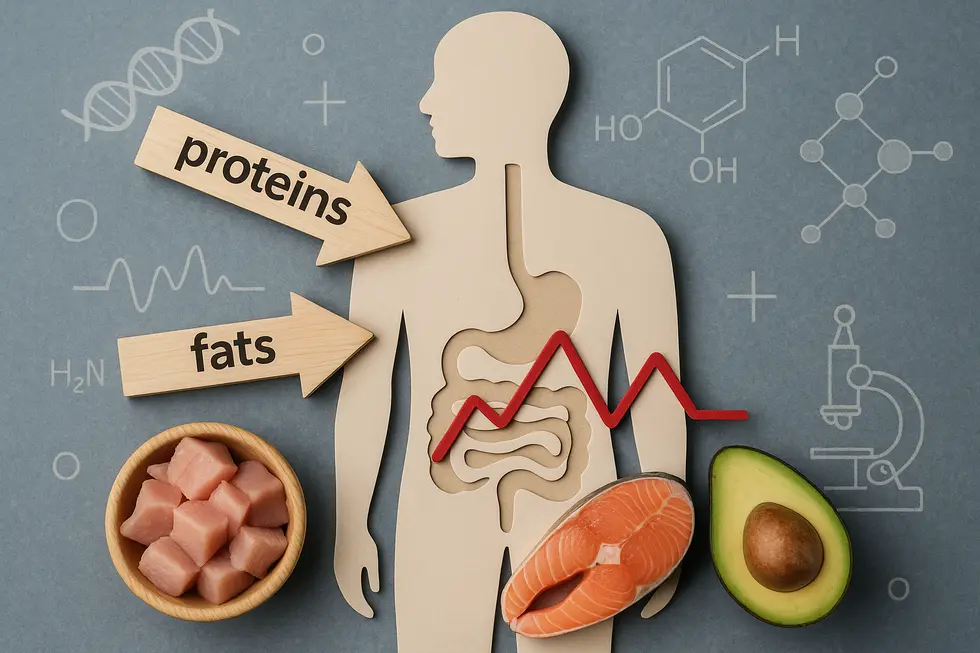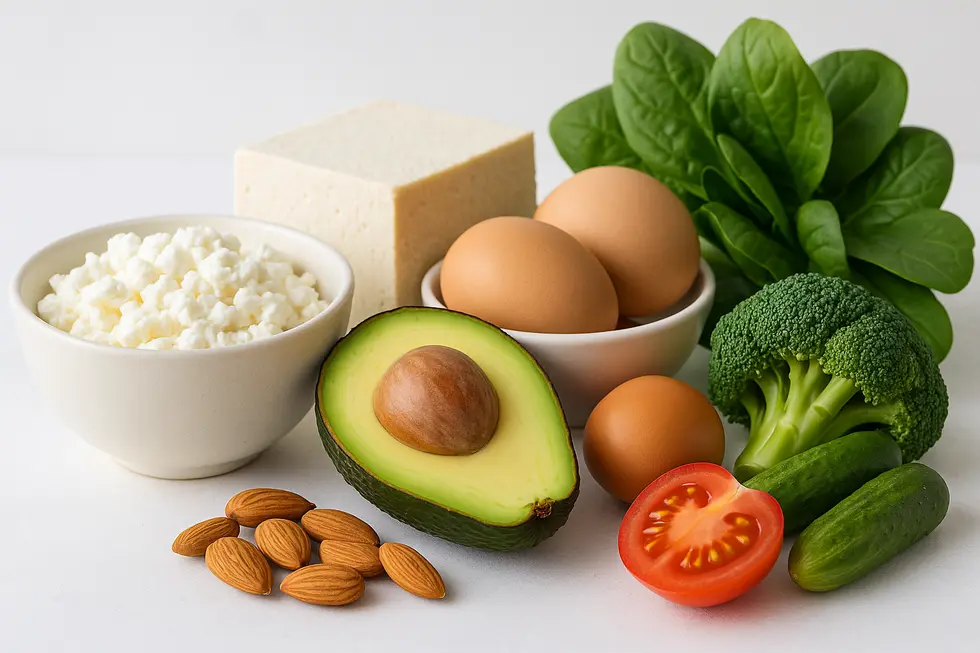Understanding the glycemic index is essential for those managing diabetes or focusing on health-conscious eating. While most foods with a low glycemic index contain carbohydrates that affect blood sugar, some foods fall outside the index entirely because they lack carbohydrates. These foods, often misconceived as having a glycemic index of 0, include meats, certain dairy products, and other non-carbohydrate items. Unpacking these foods’ roles and effects on blood sugar, alongside practical dietary strategies incorporating them, offers a fresh perspective on managing dietary choices for better health outcomes.
Exploring the Reality and Myths of Zero Glycemic Index Foods

In the intricate world of nutrition, the glycemic index (GI) stands as a pivotal measure that helps individuals understand how various foods impact blood sugar levels. The glycemic scale, ranging from 0 to 100, assigns a value to carbohydrate-containing foods based on how quickly they raise blood glucose. At the heart of this discussion are foods purportedly having a glycemic index of 0—a concept that deserves deeper exploration due to common misconceptions surrounding it.
The notion of zero glycemic index foods primarily stems from a misunderstanding. Technically, these foods do not contain carbohydrates, thus evading the conventional GI measurement. Common examples include meats such as beef, chicken, and fish, all of which lack the carbohydrates necessary to influence blood glucose levels and therefore do not appear on the glycemic index scale at all. Similarly, eggs share this characteristic, adding to their reputation as protein-rich staples rather than carbohydrate sources.
More interestingly, fruits like avocados, although technically not assigned a GI value, have been mistakenly grouped under the zero gi category due to their minimal carbohydrate content. Avocados contain a unique sugar called D-mannoheptulose, which some studies suggest might even aid in blood sugar regulation. Yet, their GI might vary slightly depending on ripeness and preparation method, underscoring the need for informed consumption choices.
It is essential to differentiate between foods that simply do not contain carbohydrates and those that hold nutritional significance beyond the glycemic index. For instance, while avocados have a low impact on blood glucose levels due to their negligible sugar content, they are a powerhouse of healthy fats and fibers. These nutrients contribute to a balanced diet, highlighting that the absence of carbohydrates should not be the sole consideration in diet planning.
Another common misconception is that all low or zero GI foods are beneficial for everyone. The glycemic index is particularly useful for individuals needing to manage blood sugar levels, such as those living with diabetes. However, the broader nutritional profile of food should not be overlooked. While low GI foods might prevent rapid glucose spikes, they are not always synonymous with high nutrient density. A diet solely focusing on GI could inadvertently neglect other essential nutrients vital for overall health, such as vitamins and minerals typically found in carbohydrate-containing fruits and vegetables.
Practically applying the concept of zero GI foods requires a balanced approach that integrates the glycemic index as part of a comprehensive dietary strategy. It cannot be the sole yardstick. For instance, integrating foods like avocados can be beneficial, not just for their low impact on blood sugar levels, but also because of their contributions to heart health and satiety due to rich monounsaturated fats. This emphasizes the role of the glycemic index as one of many tools that can guide dietary choices, particularly in the context of certain health conditions, rather than a standalone indicator of a food’s healthfulness.
For those looking to further explore the nuances and health benefits associated with foods misclassified as having a zero GI, additional resources and diet plans can be explored at Low Glycemic Foods Benefits, allowing for a more nuanced and comprehensive understanding.
In sum, while zero glycemic index foods provide a fascinating entry point to discussions on dietary planning and health, they remind us of the complexity within nutritional science. Conclusively, balancing the glycemic index with a thorough review of overall nutritional value, portion size, and dietary diversity remains quintessential for optimal health.
Exploring the Role of Non-Carbohydrate Foods in Glycemic Control

Understanding the glycemic index (GI) is fundamental for managing blood sugar levels effectively. Although primarily associated with carbohydrate-rich foods, the glycemic index’s influence stretches beyond its direct purview. Non-carbohydrate foods like proteins and fats do not have an assigned glycemic index value, yet they wield significant control over blood sugar dynamics. They come into play not through direct carbohydrate content but through their regulatory effect on carbohydrate digestion and subsequent glycemic response.
At first glance, it might seem as though non-carbohydrate foods might be irrelevant in the conversation about glycemic impacts. However, that’s a misconception. These foods significantly affect the rate and efficiency of carbohydrate digestion. When proteins and healthy fats are consumed, they trigger physiological responses that slow down digestion, particularly of carbohydrates. This delayed digestive process plays a critical role in moderating how swiftly glucose is released into the bloodstream. By doing so, they help ensure a gradual and steady increase in blood sugar levels, rather than abrupt spikes that are characteristic of high-GI carbohydrate-rich meals.
The biological mechanisms underlying these impacts are nuanced and scientifically fascinating. Fiber, commonly present in many non-starchy vegetables such as broccoli and carrots, is notable for its prowess in modulating glycemic responses. It impedes swift carbohydrate breakdown by enhancing the meal’s physical complexity within the digestive tract. By slowing the digestion process, fiber plays a pivotal role in blood sugar management, making it a valued dietary component, particularly for people with diabetes or those aiming to stabilize blood glucose levels.
Equally significant is the role of proteins and fats in delaying gastric emptying. By extending the duration during which food is held in the stomach, proteins and fats inherently control the subsequent glucose release rate into the bloodstream. This mechanism helps avert rapid escalations in blood sugar and insulin levels, reducing the risks associated with chronic diseases like diabetes and heart disease. The cumulative effect of these processes highlights the importance of non-carbohydrate foods in crafting a balanced diet that maintains steady blood sugar levels.
Incorporating non-carbohydrate foods into meals strategically can yield tangible health benefits. For individuals searching for practical ways to optimize their diet concerning blood sugar control, pouring attention into meal composition—combining proteins, healthy fats, and fiber along with carbohydrates—is a validated route. It’s a method steeped in evidence, supporting the claim that understanding the nuances of food interaction not only aids in immediate glycemic control but also enhances long-term wellness outcomes. For those interested in how low glycemic foods can boost overall health, exploring comprehensive guides like The Benefits of Low Glycemic Foods can offer valuable insights.
The awareness of how non-carbohydrate foods impact the glycemic index provides a broader perspective in dietary planning and glucose management. This insight becomes a powerful tool for those aiming to curate diets that assist in maintaining optimal metabolic health. While non-carbohydrate foods may not register on the glycemic index scale, their indirect influence is indispensable in the broader narrative of blood sugar regulation and health. For additional in-depth information on the biological impact of foods on the glycemic index, resources such as the Cleveland Clinic’s Glycemic Index Explanation are invaluable.
Harnessing the Potential of Low and Zero GI Foods in Meal Planning

In the realm of dietary planning, the glycemic index (GI) stands as a crucial tool for understanding how different foods affect our blood sugar levels. Foods classified with a low GI score, typically 55 or below, are lauded for their ability to induce a gradual increase in blood glucose. However, when it comes to foods with a glycemic index of zero, the definition becomes more nuanced.
True zero GI foods, in the technical sense, do not exist because the glycemic index primarily measures carbohydrate-containing foods. However, non-carbohydrate foods like lean meats and fish are effectively treated as zero GI because they do not impact blood sugar levels. It’s important to note that these foods, while vital to a balanced diet, are not included in the glycemic index database in the traditional sense. Instead, they are celebrated for their role in providing essential nutrients without spiking blood sugar.
For those who are conscientious about managing blood sugar levels, incorporating foods naturally low in carbohydrates or containing negligible sugar can be transformative. While avocados, for instance, are not often labeled as having a GI of zero, they have a negligible impact on blood sugar. Their minimal sugar content combined with high fiber ensures they are almost akin to zero GI effects, particularly when consumed raw and unprocessed.
The approach of integrating low GI foods into daily meals can act as an effective strategy, especially for those battling diabetes or wishing to maintain steady energy throughout the day. Consider fruits such as peaches, plums, and apricots, which not only rank low on the GI scale but also provide a bounty of vitamins and antioxidants. Such nutrients are instrumental in enhancing insulin sensitivity and overall health.
To support blood sugar regulation, these low GI foods can also be paired with healthy fats and proteins. For example, combining apples or grapefruits with a handful of nuts or seeds can create a snack that maintains satiety and blood sugar stability. It’s essential for dietary success to forge meals that integrate both variety and consistency in low GI foods, thus leveraging their full health potential.
Moreover, incorporating fruits like cherries and strawberries can infuse a diet with antioxidants, supporting broader health benefits beyond blood sugar control. These fruits deliver much-needed dietary diversity and ensure meal plans are not only health-conscious but also flavorful.
When planning meals, one must understand how various foods interact with each other. Low GI foods can effectively reduce blood glucose peaks, and when complemented by adequate proteins and fats, they promote a holistic approach to nutrition. While a comprehensive low glycemic food chart can be instrumental in planning, consultation with dietary resources, such as those offered by GlycemicIndex.com, can provide nuanced insights into meal planning strategies.
For a deeper dive, exploring our curated resources on the glycemic diet plan insights can foster a deeper understanding of meal structure rooted in the glycemic index. Whether for managing diabetes or maintaining general health, informed food choices can pave the way for a balanced lifestyle, underscoring the subtle power of the glycemic index in our dietary decisions.
Final thoughts
0 glycemic index foods, while often misunderstood, offer unique benefits for glycemic control when combined with a knowledge-based approach to meal planning. These foods, rich in proteins and fats, can help maintain stable blood sugar levels without contributing directly to glucose spikes. Incorporating them wisely into your diet, along with carbohydrate-conscious choices, fosters better health management and an improved understanding of dietary impacts. By focusing on balanced eating patterns, you can harness the potential of these foods to support long-term health goals.
Don’t just read about better health—live it. Download the Glycemic Index Guide Tracker today to start making smarter food choices, track your glucose, and stay on top of your nutrition—all in one app.
About us
Glycemic Index Guide Tracker is a powerful yet easy-to-use mobile app designed to help you make informed dietary choices by tracking the glycemic index (GI) and glycemic load (GL) of the foods you eat. Whether you’re managing diabetes, following a low-carb or keto diet, or simply aiming to maintain steady energy and better health, the app offers a comprehensive food database, nutrition and glucose tracking tools, weight monitoring, and curated low-GI recipes—all in one intuitive interface. It’s your go-to companion for understanding how different foods affect your blood sugar and for building smarter eating habits.


Leave a Reply